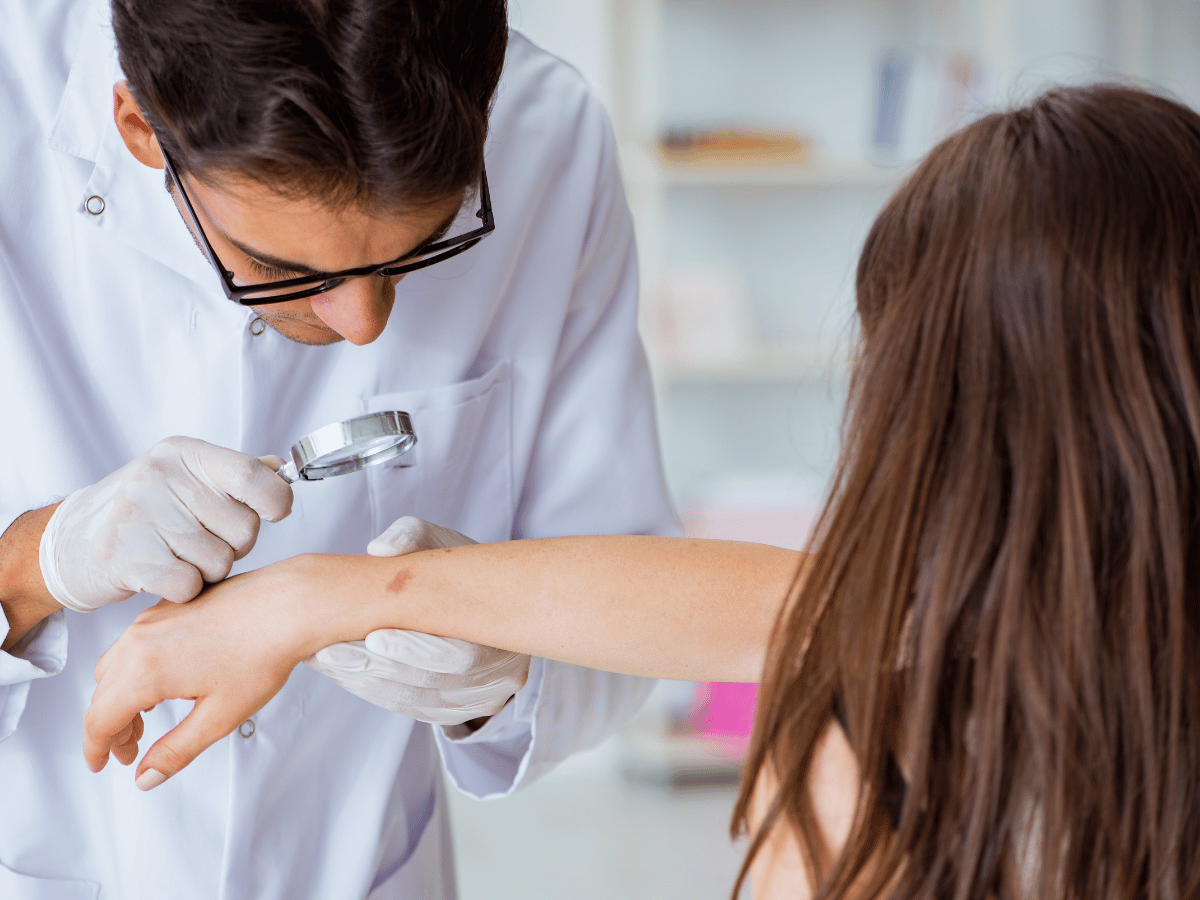Rosacea … How can you take the red out?
by David T. Harvey, MD Mohs Surgeon & Cosmetic Dermatologist

Rosacea is a skin disorder which can cause flushing and breakouts of the skin. It usually starts with redness on the cheeks and can slowly worsen.
Because the changes associate with rosacea are gradual, it may be hard to recognize in its early stages. Unfortunately, many people mistake rosacea for a sunburn, a complexion change, or acne and do not contact a dermatologist. The good news…rosacea can’t be cured, but it can be controlled.
WHAT SHOULD I LOOK FOR?
Many rosacea patients have only one or two symptoms; here is a partial list of the common ones:

Redness
This resembles a blush or sunburn and it is caused by flushing (when a larger amount of blood flows through vessels quickly and the vessels dilate to handle the increased flow). Redness can increase gradually and facial skin may get dry. Thankfully, there is a great new product coming on the market this month- Mirvaso. This topical prescription gel contains the vasoconstricting agent brimonidine and is applied once daily. This is the first time that we have had an FDA approved product specifically designed to constrict blood vessels. Very good news and it should be available later this month!
Pimples (Papules)
As rosacea progresses, pimples may appear on the face. These may be inflamed — small, red and solid (papules) or pus-filled (pustules) like teenage acne. Because it resembles acne, rosacea has been referred to as “adult acne” or “acne rosacea.” The difference?…..rosacea is not associated with blackhead or whitehead development as is seen with teenage acne.
Red lines
When people with rosacea flush, the small blood vessels of the face may get larger — eventually showing through the skin on the nose and cheeks. The stubborn vessel lines can be treated with pulse dye laser.

Stinging
Sometimes patients with rosacea complain of stinging or burning. Such symptoms can be treated with oral antibiotics, laser, or photodynamic therapy
Nasal Bumps (Rhinophyma)
In extreme cases, patients may notice small flesh colored bumps on the nose. As more bumps appear, the nose becomes more swollen and disfigured. This condition is referred to as rhinophyma. CO2 laser or dermabrasion can been used to treat these bumps.
WHAT CAUSES ROSACEA?
There are many theories as to what actually causes rosacea but none have been proven. Most researchers believe that there is a link between rosacea and flushing. There is thought to be a neurovascular mediator involved. Demodex mites and antibodies to the bacteria H. Pylori have also been implicated.
WHO GETS ROSACEA?
The disorder seems to affect fair-skinned adults more often, though it can affect any skin type. Women tend to develop rosacea more often than men, but it is men who are more prone to develop rhinophyma. The image of one famous sufferer, W. C. Fields, helped to mistakenly link rosacea with alcoholism. Although drinking alcohol can make rosacea worse, those who never consume alcohol can also develop rosacea.
WHAT TREATMENTS ARE USED FOR ROSACEA?
Several medications are available by doctor’s prescription. As mentioned earlier, Mirvaso appears to be a promising new treatment. This drug control facial redness and can be used with other modalities such as oral or topical antibiotics to reduce papule and pustule formation. Lasers and photodynamic therapy have also been used to treat rosacea.

CAN ROSACEA BE CURED?
Not yet. But there a a number of ways to control rosacea, reduce redness and partially reverse disease progress. Early detection and treatment are the keys to improving rosacea.
CAN ANYTHING MAKE ROSACEA WORSE?
The most common triggers are: hot drinks, alcohol, spicy foods, stress, sunlight, extreme heat or cold.
Experts say you should avoid anything that causes skin flushing. But what bothers one person may not cause a problem in another. You will need to find out what things affect you and decide if you want to change your habits to avoid them. Talk to your doctor about how to identify — and deal with — your own flushing triggers.
WHAT ABOUT WASHING OR MOISTURIZING MY FACE?
Following a regular cleansing and medication routine will make rosacea treatment easier.
- Soaps/Cleansers — Only very mild products should be used on the face. Avoid products that contain alcohol or irritants.
- Moisturizers — Apply a quality moisturizer as needed. When using with a topical medication, you can apply a moisturizer after the medication has dried.
- Sunscreens — Use a broad spectrum sunscreen with at least an SPF 30 or higher whenever you think you will be in the sun. Physical blocks that contain zinc oxide are wonderful for this purpose.
In general, it helps to choose facial products that will not clog pores; they will have the word “noncomedogenic” on the package. Avoid products that contain alcohol (check hair spray and astringent labels), acetone, or fragrances
National Rosacea Organization – The popular website for those who are afflicted with rosacea. Learn about the signs and symptoms of rosacea. Free educational materials and a periodic newsletter, Rosacea Review, are also available. http://www.rosacea.org.



